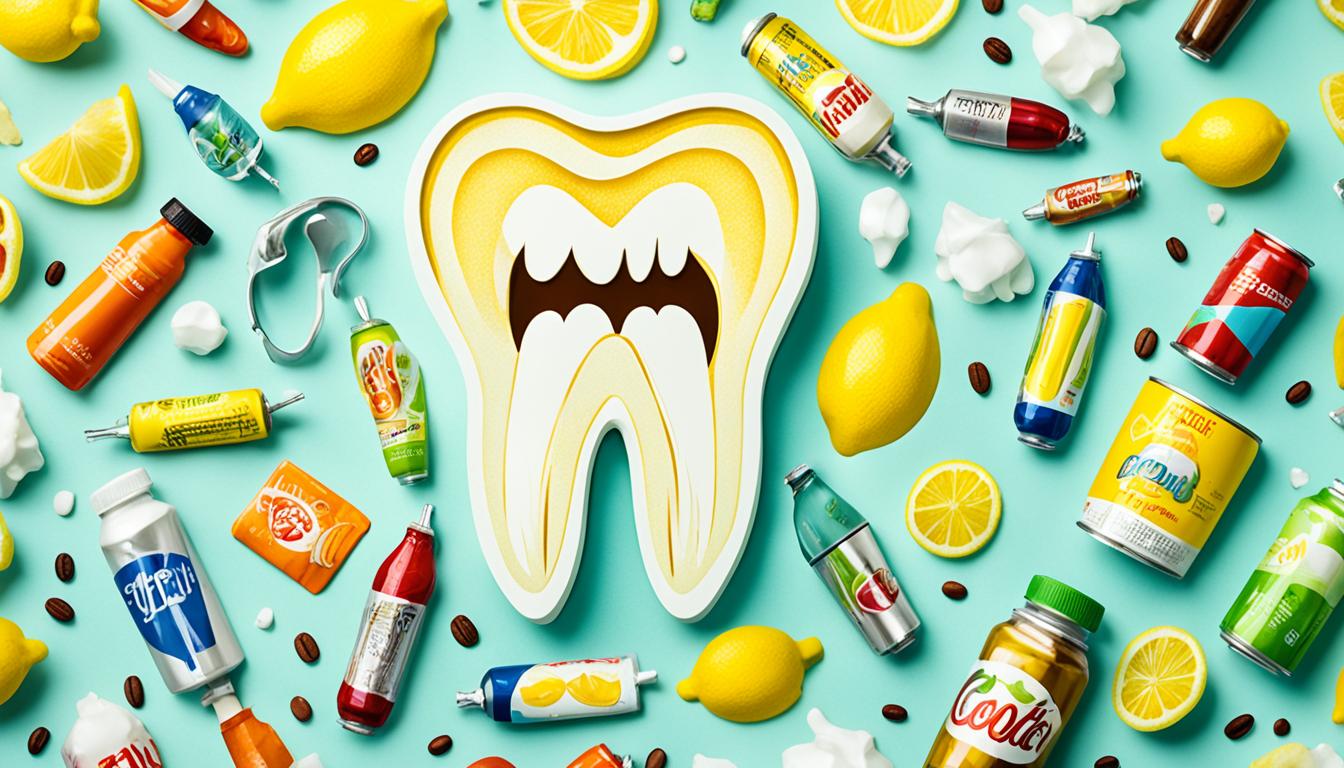Despite faithfully brushing your teeth every day, you may find yourself dealing with the frustration of yellow teeth. But why does this happen, especially when you’re prioritizing your oral hygiene? Let’s dive into the reasons behind this yellow teeth problem and explore effective ways to prevent and address it.
Why Are My Teeth Yellow When I Brush Them Everyday?
Tooth discoloration can occur due to various factors, even when you brush your teeth regularly. Incorrect brushing techniques and inadequate removal of plaque can lead to staining, giving your teeth a yellowish hue. Additionally, consuming pigmented foods and beverages such as coffee, tea, red wine, and berries can leave unwanted stains on your teeth. Some individuals may naturally have yellow or gray teeth, while certain medications, particularly antibiotics, can also cause tooth discoloration.
So, what can you do to tackle this yellow teeth issue? Fortunately, there are teeth whitening solutions available to help you achieve a brighter smile. Options include at-home whitening strips or professional teeth whitening procedures. By addressing the underlying causes and implementing effective solutions, you can regain the confidence of having pearly white teeth.
Ready to discover the importance of proper brushing techniques and how they can maintain the whiteness of your teeth? Continue reading to find out in the next section!
The Importance of Proper Brushing Techniques
Using the correct brushing techniques is essential for maintaining white teeth. It is recommended to brush for two minutes, twice daily, ensuring that every corner of the mouth is reached. Brushing the tongue is also important to eliminate bacteria that cause bad breath and tooth discoloration. Choosing a toothpaste labeled as “whitening” can help maintain tooth health while also whitening the teeth. By practicing proper brushing techniques, you can reduce the risk of teeth yellowing.
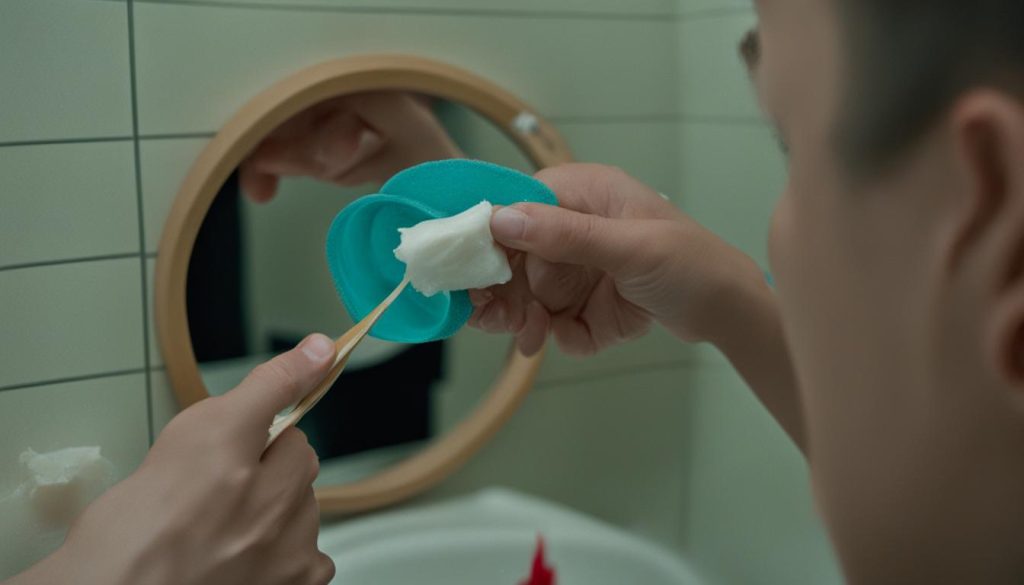
Dental Hygiene Tips: Proper Brushing Techniques
Follow these dental hygiene tips to ensure you’re using proper tooth brushing techniques:
- Hold your toothbrush at a 45-degree angle against your gums.
- Use short, gentle back-and-forth motions to clean the outer and inner surfaces of your teeth.
- Brush in a circular motion on the chewing surfaces.
- Don’t forget to brush your tongue to eliminate bacteria and freshen your breath.
- Replace your toothbrush every three to four months or when the bristles become frayed.
By incorporating these techniques into your daily oral care routine, you can effectively maintain white teeth and promote optimal dental hygiene.
Benefits of Proper Brushing Techniques
Proper tooth brushing techniques offer several benefits beyond just whiter teeth:
- Prevents tooth decay by removing plaque and bacteria.
- Reduces the risk of gum disease.
- Prevents bad breath caused by oral bacteria.
- Helps maintain healthy gums.
By prioritizing proper brushing techniques, you not only maintain the color of your teeth but also ensure overall oral health.
Choosing the Right Toothbrush and Toothpaste
Using the right tools is essential for effective brushing and maintaining white teeth. When choosing a toothbrush, opt for one with soft bristles to avoid damaging the enamel. Electric toothbrushes can also be beneficial, as they provide deeper cleaning and ensure consistent brushing techniques.
| Toothbrush | Toothpaste |
|---|---|
| Soft-bristled toothbrush | Whitening toothpaste |
| Electric toothbrush | Fluoride toothpaste |
| Orthodontic toothbrush | Sensitive teeth toothpaste |
| Children’s toothbrush | Kids’ toothpaste |
By using the appropriate toothbrush and toothpaste, you can maximize the benefits of proper brushing techniques and achieve optimal dental hygiene.
Foods and Beverages That Cause Tooth Staining
When it comes to yellow stains on teeth, the foods and beverages we consume play a significant role. Certain items contain pigments that can deposit on the teeth, leading to unsightly yellow or brown stains. Coffee, tea, red wine, and berries are some well-known culprits.
To prevent staining from everyday habits, it is recommended to rinse the mouth with water after consuming these items. This simple step can help minimize the contact between these pigments and the tooth surface, reducing the likelihood of yellow teeth.
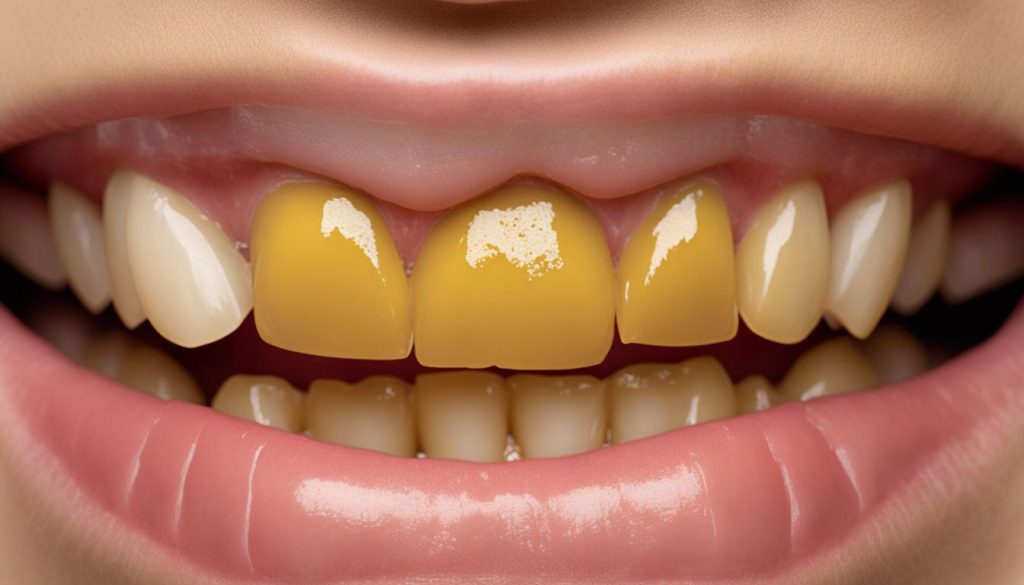
Dental Hygiene Tips for Yellow Teeth
Here are some dental hygiene tips to combat yellow teeth caused by food and beverage staining:
- After consuming coffee, tea, red wine, or berries, rinse your mouth with water to remove any residue.
- Consider using tooth-whitening products that can help combat the staining effects and enhance the whiteness of your teeth.
- Practice good oral hygiene by brushing your teeth twice a day with a toothpaste that has whitening properties.
- Use dental floss regularly to remove plaque and food particles that can contribute to yellowing.
- Visit your dentist regularly for professional cleanings to maintain optimal oral health.
Yellow Teeth Causes
Yellow teeth can be attributed to various factors, such as:
- Consumption of pigmented foods and beverages
- Poor oral hygiene
- Genetics
- Smoking
- Aging
By understanding the causes of yellow teeth, you can take proactive steps to prevent further discoloration and maintain a healthy, radiant smile.
| Causes | Description |
|---|---|
| Consumption of pigmented foods and beverages | Items like coffee, tea, red wine, and berries contain pigments that can stain teeth. |
| Poor oral hygiene | Inadequate brushing and flossing can lead to the accumulation of plaque, which can contribute to yellow teeth. |
| Genetics | Some individuals naturally have teeth with a yellow or gray tint. |
| Smoking | Tobacco smoke contains chemicals that can stain teeth over time, resulting in a yellowish appearance. |
| Aging | As we age, the enamel layer of the teeth naturally becomes thinner, allowing the yellowish dentin to show through. |
Natural Tooth Color and Genetics
Understanding the natural color of your teeth is essential when it comes to addressing yellow teeth. Did you know that tooth color can vary among individuals, and some people naturally have yellow or gray teeth? This means that even with regular brushing, these individuals may not see a noticeable improvement in the whiteness of their teeth.
However, there are still effective ways to prevent and minimize teeth discoloration. One popular option is teeth-whitening procedures, such as at-home whitening strips. These products have been proven to effectively reduce the appearance of discoloration and improve the overall appearance of yellow teeth.
If you’re struggling with yellow teeth due to genetic factors, seeking professional help from a dentist is highly recommended. Dentists can provide tailored advice and safe, effective solutions for achieving a brighter smile. They may recommend professional teeth whitening treatments or offer personalized oral care plans to address the specific needs of your yellow teeth.
Remember, addressing yellow teeth is not just about aesthetics; it’s also about maintaining oral health. By taking steps to prevent further discoloration and seeking professional guidance, you can effectively care for your yellow teeth and achieve the best possible results.
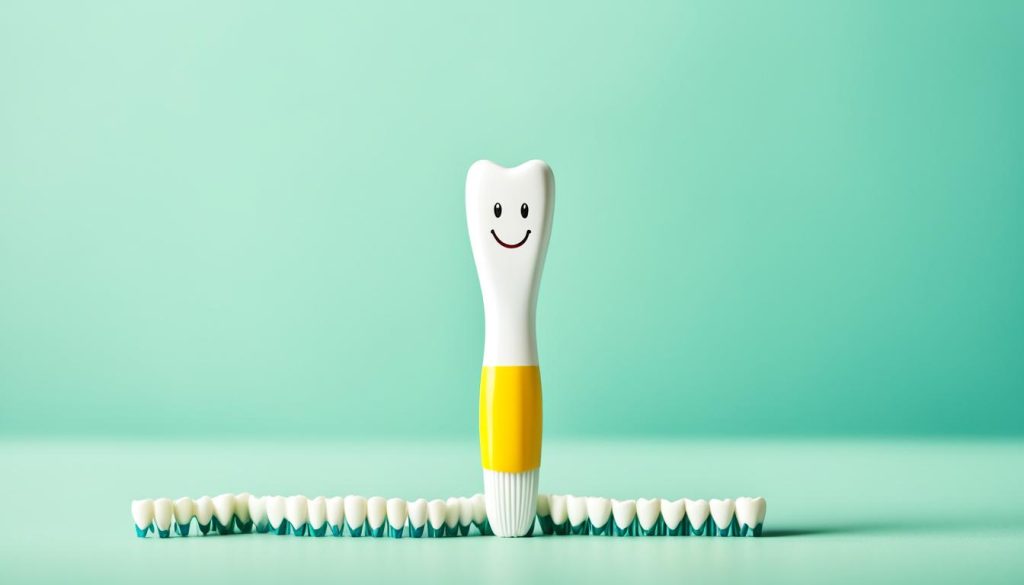
Expert Tips for Oral Care of Yellow Teeth
- Brush your teeth twice daily with a toothpaste specifically formulated for yellow teeth.
- Add whitening mouthwash to your oral care routine to help prevent further discoloration.
- Avoid smoking, as it can significantly contribute to yellowing of the teeth.
- Rinse your mouth with water after consuming staining foods and beverages to minimize their effects on your teeth.
- Consider professional teeth whitening treatments for more severe cases of yellow teeth.
By following these expert tips and maintaining a consistent oral care routine, you can effectively prevent and minimize yellow teeth, ensuring a healthier and brighter smile.
Medications and Tooth Discoloration
Certain medications, particularly antibiotics, can cause tooth discoloration. This type of staining is often characterized by a yellowish or brownish hue, which can be challenging to eliminate through regular brushing alone. If you suspect that your medication is responsible for tooth discoloration, it is advisable to seek guidance from a dentist who can provide valuable insights and recommend effective treatment options to manage and minimize the discoloration. By addressing the underlying cause of the tooth discoloration, you can prevent further yellowing of the teeth and maintain a white smile.
If you’re concerned about tooth discoloration caused by medications, here are some important steps to take:
- Consult a dentist: A dental professional can evaluate your condition and determine the best course of action to address the tooth discoloration.
- Consider alternative medications: If possible, discuss with your healthcare provider the possibility of switching to medications that have fewer side effects on tooth color.
- Adopt proper oral hygiene practices: Maintaining good oral hygiene, including regular brushing and flossing, can help minimize the impact of medication-induced tooth discoloration.
- Explore teeth-whitening options: Depending on the severity of the tooth discoloration, your dentist may recommend teeth-whitening procedures to brighten your smile.
By addressing the tooth discoloration caused by medications and following the guidance of your dentist, you can prevent further yellowing of the teeth and maintain a white, confident smile.
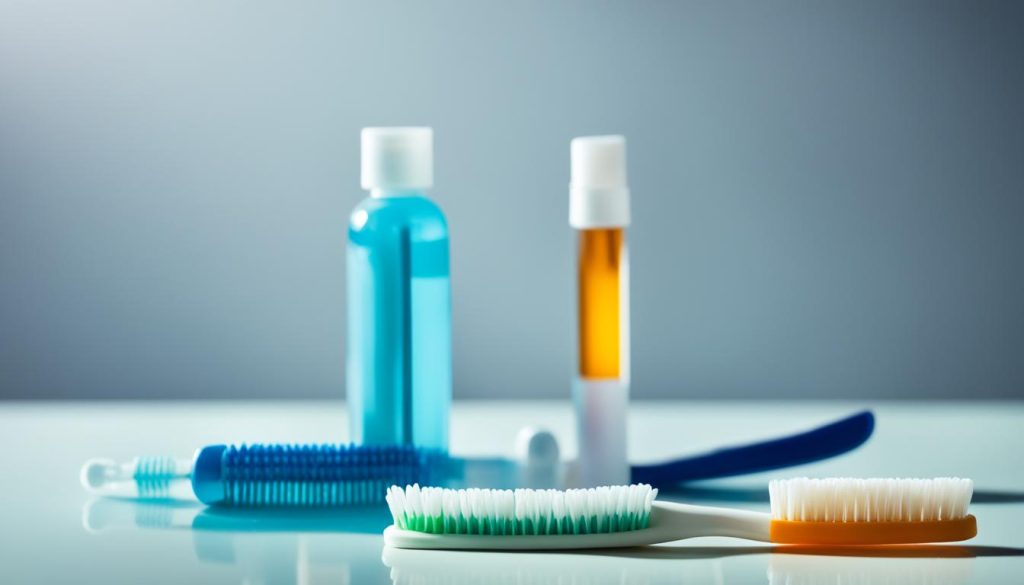
Conclusion
Dealing with yellow teeth can be frustrating, especially when you brush them every day. However, there are effective solutions available to help you achieve and maintain a white smile. Regular dental cleanings are crucial in removing stubborn stains and preventing further discoloration. Additionally, teeth-whitening procedures can provide dramatic results, giving you the bright smile you desire.
Choosing the right toothbrush and toothpaste is essential for maintaining oral hygiene and combating yellow teeth. Look for toothbrushes with soft bristles to prevent enamel damage and ensure gentle yet effective cleaning. Consider using toothpaste specifically designed to target and reduce tooth discoloration.
Furthermore, adopting good dental hygiene habits is key to maintaining white teeth. Brushing for two minutes, twice a day, and ensuring you reach all areas of your mouth will help prevent plaque buildup and stain formation. Remember to pay attention to your tongue, as bacteria can accumulate and contribute to tooth discoloration and bad breath.
To maintain white teeth, it’s essential to take proactive steps and seek professional guidance. By incorporating these strategies into your oral care routine and addressing any underlying issues, you can achieve the bright, confident smile you deserve.

